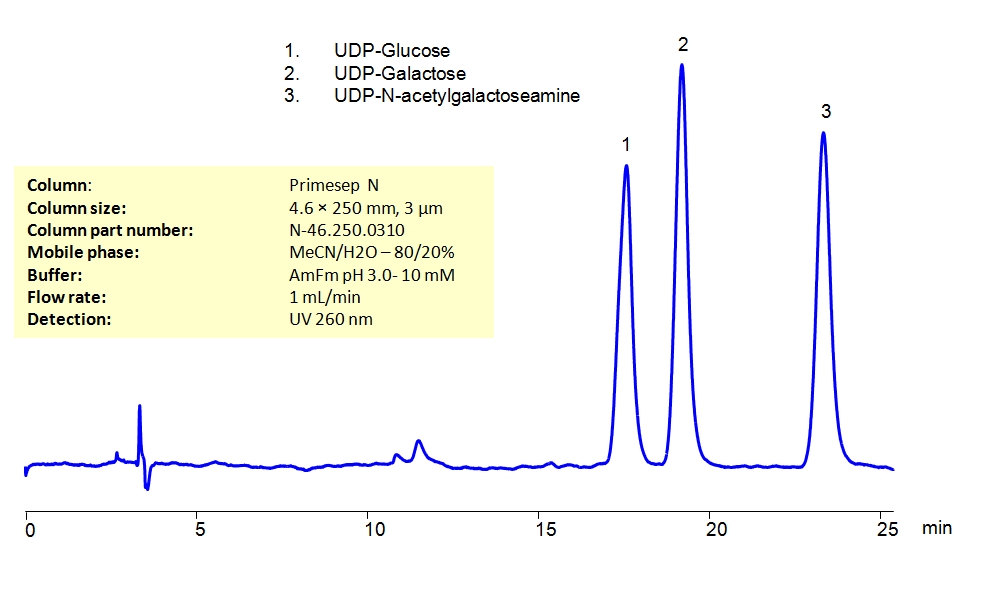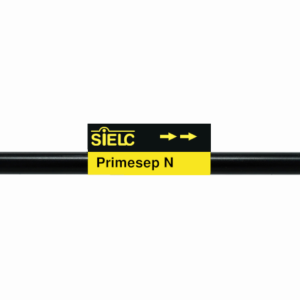High Performance Liquid Chromatography (HPLC) Method for Analysis of Gadolinium-DOTA
Uridine sugar diphospates are a class of complex nucleotide sugars that are integral to metabolic processes in the cell. Uridine diphosphate galactose (UDP-Galactose), Uridine diphosphate glucose (UDP-Glucose), and uridine diphosphate N-acetylglucosamine (UDP-N-acetylgalactoseamine or UDP-GlcNAc) are some of the most well-known nucleotide sugars.
These three uridine sugar diphosphate compounds can be detected in the low UV regime. Using a Primesep N normal-phase column and a mobile phase consisting of water and acetonitrile (MeCN) with an ammonium formate (AmFm) buffer, UDP-galactose, UDP-glucose, and UDP-GIcNAc can be retained, separated, and analyzed. This analysis method can be UV detected at 260 nm.
| Column | Primesep N, 4.6×250 mm, 3 µm, 100A |
| Mobile Phase | MeCN – 80% |
| Buffer | Ammonium formate pH 3.0 – 10 mM |
| Flow Rate | 1.0 ml/min |
| Detection | UV 260 nm |
| Class of Compounds | Sugar, Phospate |
| Analyzing Compounds | Uridine-5′-diphosphate-glucose, Uridine 5′-diphospho-N-acetylgalactosamine disodium salt, Uridine 5′-diphosphogalactose disodium salt |
Application Column
Primesep N
The Primesep family of mixed-mode columns offers a wide variety of stationary phases, boasting unprecedented selectivity in the separation of a broad array of chemical compounds across multiple applications. Corresponding Primesep guard columns, available with all stationary phases, do not require holders. SIELC provides a method development service available to all customers. Inquire about our specially-tailored custom LC-phases for specific separations.
Select optionsUridine 5′-diphospho-N-acetylgalactosamine
Uridine-5′-diphosphate-glucose






